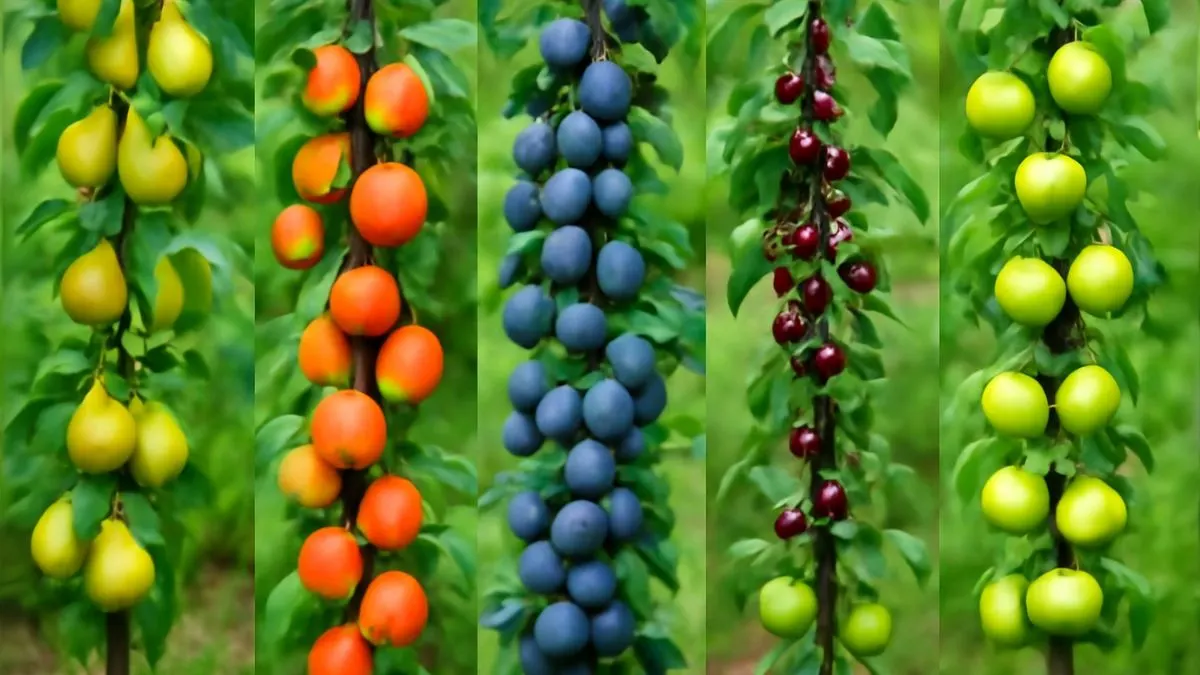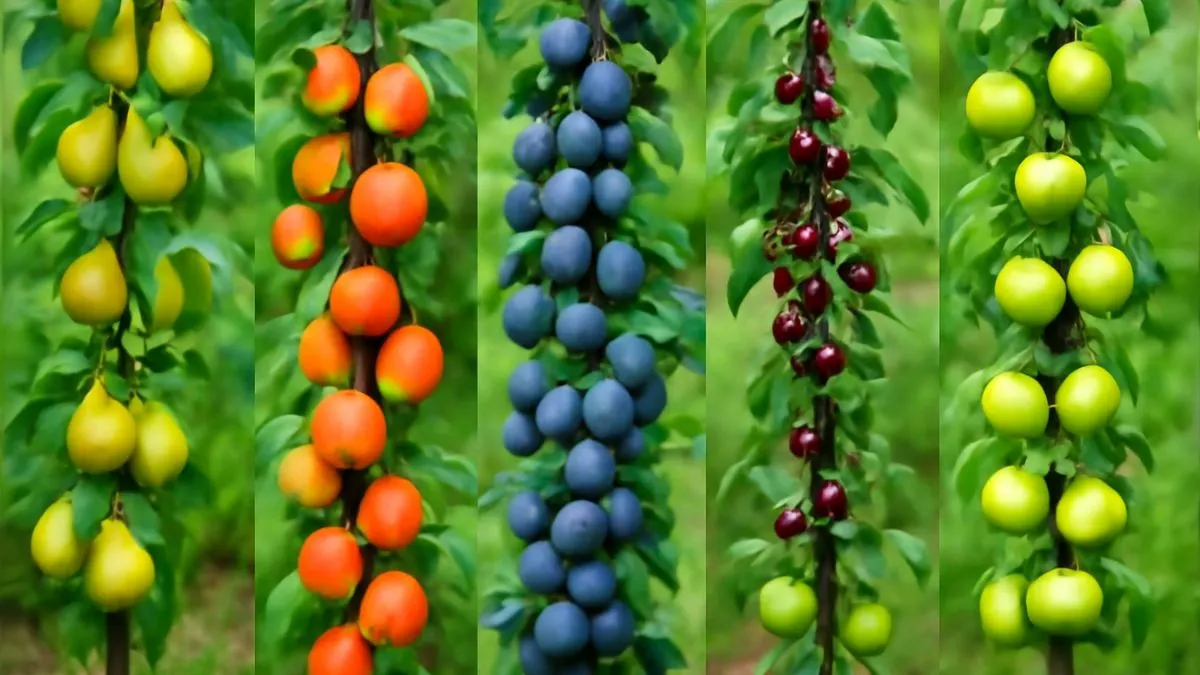Over a decade of balcony experiments has taught a powerful lesson: columnar fruit trees make small spaces feel limitless. Their naturally narrow, upright habit means more fruit per square foot with far less pruning and training. Many columnar apples mature to 8–10ft tall yet stay only 18–24in to 2–3ft wide, so it’s easy to build a slim “living fence” that bursts with blossoms in spring and finishes with crisp apples in fall. With the right pairings, an urban patio can quickly become a compact orchard that’s both beautiful and productive.
Why Columnar Trees Shine in Small Spaces

Columnar trees channel energy into a single vertical frame, producing short fruiting spurs instead of wide lateral branches. That architecture keeps walkways clear, preserves light for companion plantings, and simplifies care. Modern breeding has added disease tolerance and cold-climate resilience, so performance is steady even where seasons swing. In containers, these traits translate into confident fruit set early in the tree’s life, often in the first few seasons.
The Core Planting Rule
For reliable flowering, sugars, and fruit quality: plant it in full sun, in rich, loose, well-drained soil. Full sun drives bloom density and sweetness; a loose, draining substrate prevents root stress in pots and raised beds. Keep consistent moisture through the growing season—especially during heat waves—since containers dry out faster than in-ground plantings.
Build Your Compact Orchard Plan
- Spacing that works: Create a productive screen by setting columnar apples as close as 2–3ft apart, either in-ground or in large containers with excellent drainage. This density maximizes yield per linear foot without sacrificing airflow.
- Fast, full-size fruit: Columnar apple trees are not only space-saving but also highly productive, delivering full-flavored apples on a narrow footprint, often within the first seasons.
- Pollination matters: For stable cropping, plant at least two compatible varieties to boost cross-pollination and fruit set.
Personal Experience: Balcony to Bountiful
On a 12ft south-facing balcony, a trio of columnar apples (red, green, and gold types) in 16–20in containers formed a tidy “fruit wall.” The harvest ran for about a month. Pruning needs were light: remove dead or crossing bits and tip back any side shoots that broke the silhouette. The winning combo was a light, well-aerated potting mix, monthly low-analysis feeding in spring and summer, and vigilant watering. The result was steady fresh eating and enough surplus for a couple of jars of spiced apple slices.
Also Read: Grass Seeding Made Simple: How to Get a Lush Lawn Fast
Best Columnar Choices for Urban Growers
- Columnar Apple Trees
These are the backbone of most urban orchards. They keep a slim profile, thrive in containers, and perform across Canada, the USA, and similar temperate regions. Popular series (like the Urban Apple group: red, green, and gold selections) are bred for compact growth, scab/mildew tolerance, and consistent yields. Expect 8–10ft tall trees that fit even on narrow patios. Plant at least two compatible varieties to maximize set, and give them full sun, regular moisture, and light seasonal feeding for best results.

- Upright/Columnar Pear, Plum, Peach, and Cherry
Beyond apples, many nurseries offer upright or columnar-leaning pears, plums, peaches, and cherries. While not every species has a “true” genetic columnar form, narrow-growing cultivars and grafted selections stay tidy enough for containers. Plant it in full sun, in rich, loose, well-drained soil and stake in wind-prone spaces. Where needed, pair compatible varieties for pollination—self-fertile types often crop better with a partner.
Planting and Care Essentials
- Site & sun: Full sun and well-drained, enriched soil drive bloom density, fruit size, and sweetness.
- Containers: Start with 16–20in diameter pots with ample drainage; leave a 2in watering lip. Use a high-quality potting mix.
- Water: Keep soil lightly moist; water more during heat waves. Pots heat up and dry quickly.
- Feeding: Begin light, monthly feeding in spring of the year after planting; skip heavy fertilizer in the planting hole.
- Spacing: For a living fence effect, set columnar apples 2–3ft apart to pack yield into a small footprint.
- Pollination: Plant two different apple varieties within close range for heavier, more consistent crops.
- Wintering: In colder climates, overwinter containers in a sheltered, unheated spot after leaf drop to protect roots.
Columnar Apples vs. Upright Stone/Pome Types
Feature |
Columnar Apples |
Upright/Columnar Stone & Pome Types |
Habit & Width |
True columnar; 18–24in to 2–3ft wide |
Upright/narrow, varies by cultivar |
Container Friendly |
Excellent in 16–20in pots |
Good; stake some types |
Pollination |
Plant 2+ varieties for best yields |
Many benefit from partners |
Care Focus |
Sun, drainage, spacing, light feeding |
Sun, drainage, selective pruning |
Pro Tips for a Discover-Worthy Orchard
- Layer the height: Use benches or stands to stagger container heights for better sun capture and visual depth.
- Sync the bloom: Choose varieties with overlapping bloom windows for stronger cross-pollination.
- Keep it steady: Consistent moisture and monthly feeding separate sparse crops from baskets of fruit.
Also Read: Dandelion Roots: The Hidden Treasure Beneath Your Garden
Troubleshooting in Tight Quarters
- Dry pockets: Hydrophobic mix can repel water—hydrate thoroughly until runoff, and occasionally bottom-water.
- Salt buildup: Leach containers with a deep flush every few weeks in active growth.
- Wind scorch: Stake upright forms and use balcony screens to reduce leaf tatter and moisture loss.
- Heat stress: Light-colored pots and a mulch layer help moderate root-zone temperatures.
Start Small, Harvest Big
Columnar fruit trees prove that tiny spaces can deliver big, beautiful harvests. With full sun, rich, well-drained soil, smart 2–3ft spacing, and at least two compatible apples for pollination, a balcony or patio can transform into a compact orchard that flowers in spring and finishes with crisp fruit by fall. From Canada to the USA and beyond, this is urban gardening that’s elegant, efficient, and delicious.






